The exhibit at Houston’s Bonsai on the Bayou featured a special display of accent plantings. The artist behind many of these, as well as many of the other accents in the exhibit, was Sooncheng Cheah.
Sooncheng has been making accents for years and was recognized for her work at the 2016 US National Exhibition at which she won the award for best accent. Here is one of her creations from the kusamono display at Bonsai on the Bayou.
“Nurse log” – Mondo grass, purple oxalis, Mazus reptans, Violet, fiber optic grass, wild strawberry, green oxalis, Ilysanthis floribunda, creeping Jenny, Dichondra micantha
“Nurse log” detail
Accent detail
As you can see, Sooncheng’s work is unlike a lot of the accents we see in bonsai shows. The compositions are natural and look mature, they use a large number of species, and they rely on an important, but often neglected, component in accent plantings: weeds.
The Japanese term kusamono – slightly different from the accent plants used in bonsai displays – translates into “grass” or “weed” (kusa) + “thing” (mono). Accent plants displayed with bonsai are commonly known as shitakusa in Japanese: “under” (shita) + “grass/weed” (kusa).
Whether we associate more with the “grass” or “weed” translation doesn’t significantly change our understanding of accent plants as both grass and weeds refer to the common, humble, or everyday plants that accompany our bonsai.
Acorus, saxifraga, dwarf mondo grass, black mondo grass, Austrailian violet
Sooncheng collects and studies “weeds” for her kusamono and shitakusa, and she often assembles them far ahead of the exhibits at which they are intended to be shown. In some cases, she might plant moss in a container or on a log one year and then nestle in the grasses and flowers a year later once the moss has matured.
Accent planted on a rotting log
Black mondo grass, pennywort, purple oxalis, wild strawberry, Mazus reptans, fiber optic grass
Sooncheng and I had fun discussing the accents in the exhibit and the challenge of finding the right accent for a given bonsai. During this discussion, she shared the best analogy I’ve heard for the role of accents in bonsai exhibits. Like a bridesmaid, she said, the job of an accent plant is to look good, but not better – or brighter, or flashier – than the bonsai (or bride, in the analogy) next to which it stands.
We also talked about the challenges and opportunities provided by different containers made for accents. The planting below was one of my favorites in the exhibition, but the container has a bit more visual mass than I’d like to see for such a slender, upright composition.
Juncus, blue-eye grass, Cooper’s squill, pennywort, marsh pennywort, pink knotweed, sedum, purple oxalis, Mazus reptans
The same can be said for the accent below. Either a smaller container – or more plants – would improve the balance between the plants and their container.
Tall accent in round container
Sooncheng and I also talked about flow and directionality in accents. When accents “point” (lead one’s eye to the left or right) one way more than the other, their use is is often limited to trees that “point” back toward the accent. The accent below leads my eye more to the right (toward the figure) than to the left.
Accent and figure on a slab
Other accents can be rotated to suggest movement to the left or to the right. The grass and creeping flower arrangement below is an example of this. (It’s also another accent that might benefit from a slightly smaller container.)
Grass on the left
Grass on the right
Although this accent looked good from both sides, I had trouble deciding whether having the grass on one side indicated movement toward that side or in the opposite direction. After puzzling about this for a few moments, I became curious if re-working the accent with the grass closer to the center (like in the juncus composition above) could improve the balance.
Accent in blue ceramic container
Accent detail
Saxifrage, mondo grass, and flower
A big thanks to Sooncheng for taking the time to share her knowledge about accents with me and for making such wonderful compositions. I can’t wait to start hunting for weeds close to home!
Bjorn Bjorholm and Bonsai Empire Release Advanced Bonsai Course 2
I haven’t had a chance to check it out yet, but I wanted to share the release of Bjorn and Bonsai Empire’s latest course. I reviewed previous Bonsai Empire courses here, here, and here. You can learn more about the new Advanced Course here.
Subscribe to Bonsai Tonight
New Posts Delivered Every Tuesday and Friday
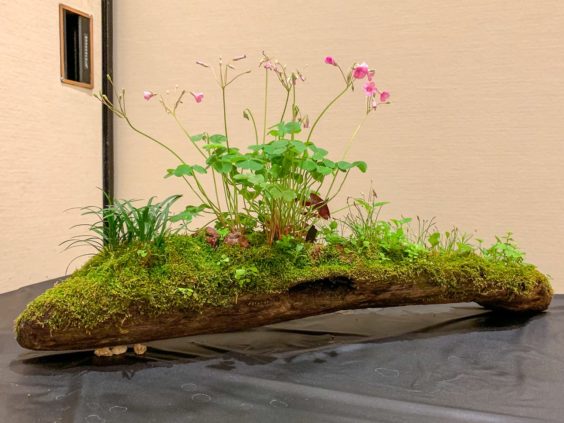
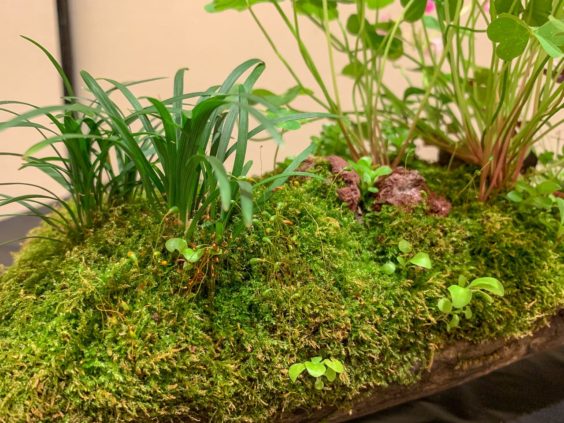
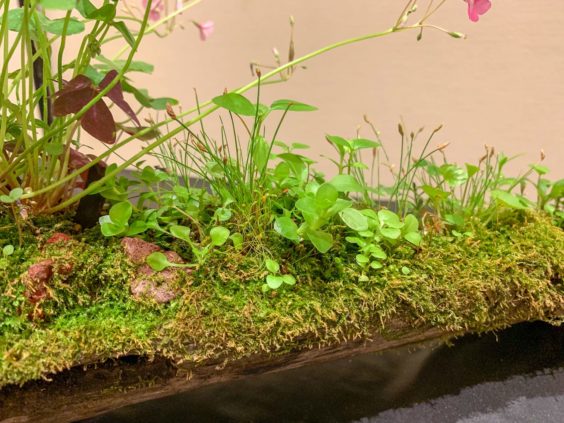
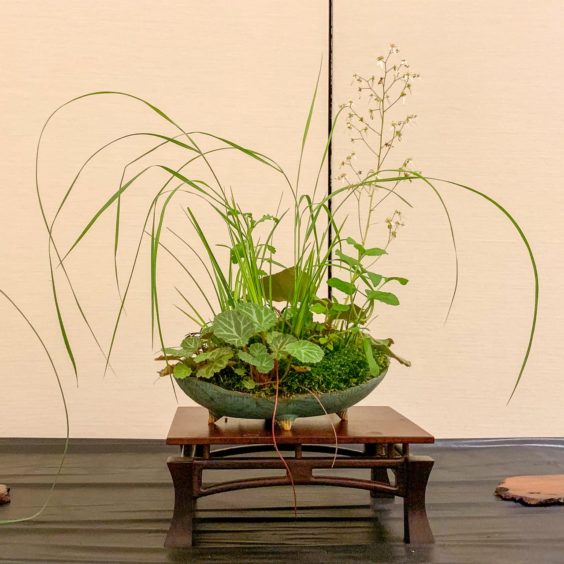
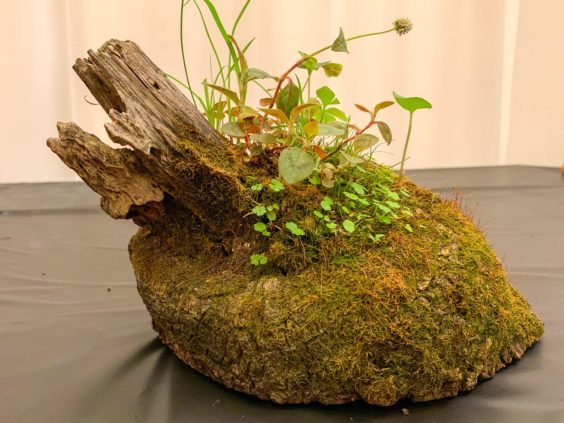
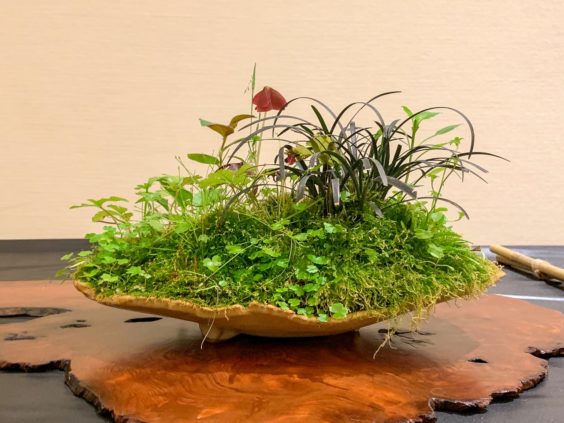
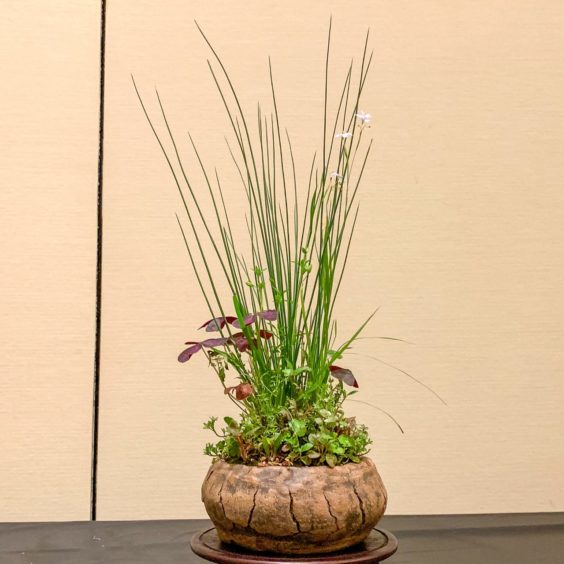
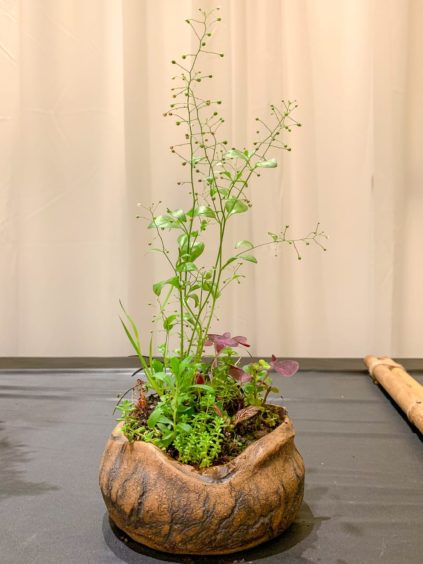
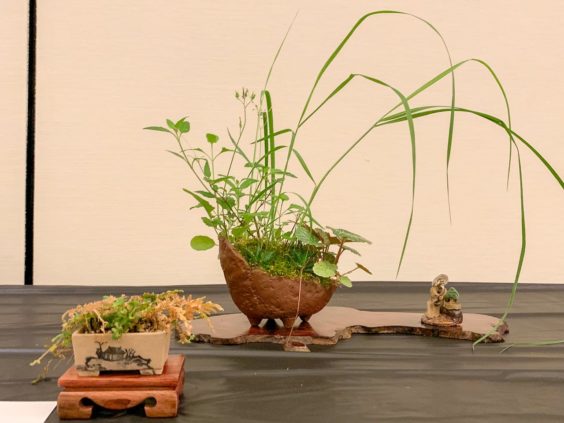
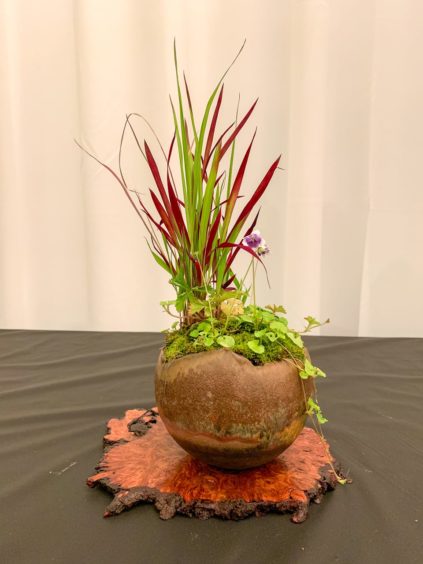
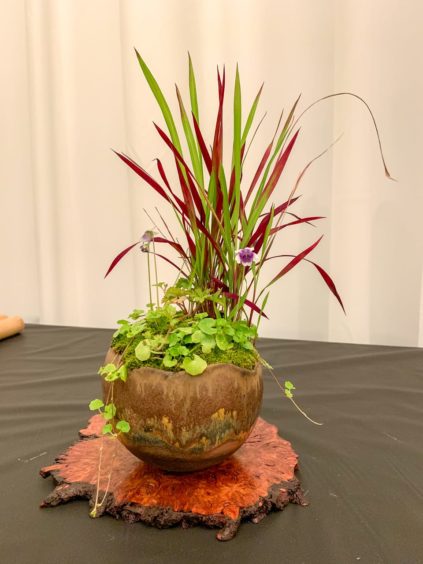
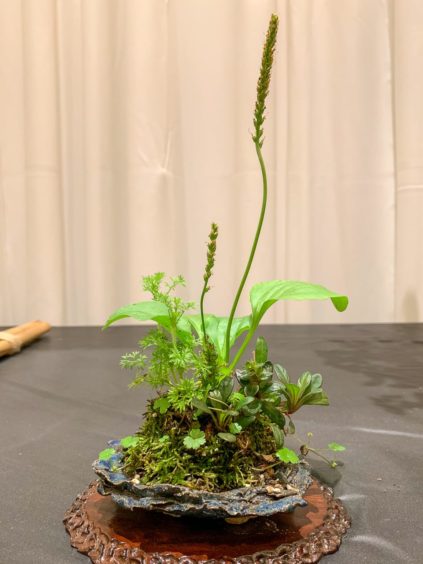
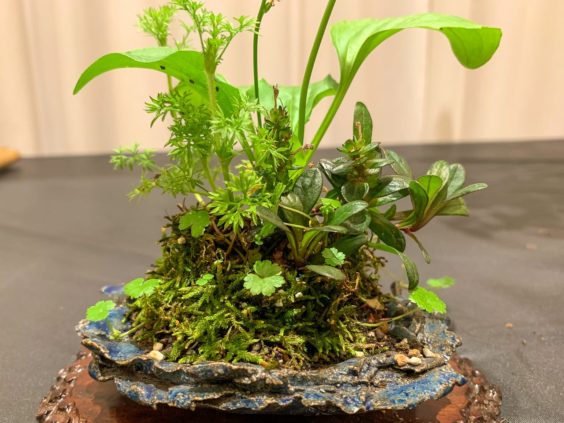
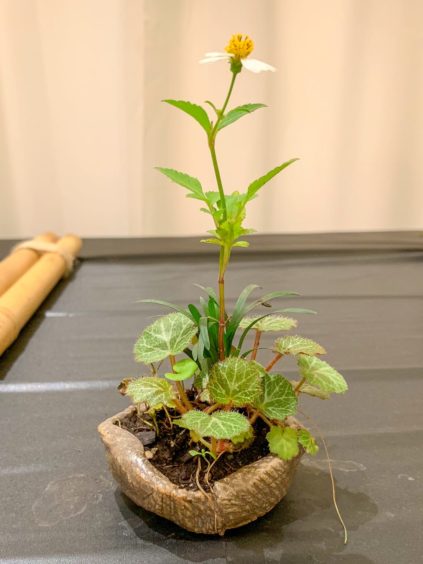
Amin Younes says
these are super!
I have an accent that I made from all the weeds taken from one of my trees, but it looks nowhere near as amazing as these (yet).
Jonas Dupuich says
Ha! Can’t wait to see them Amin – thanks for the note!
Eldon Branham says
Very good article! And, yes we are all trying to learn from Soon here in Houston, and we are getting better at Kusamono.
Jonas Dupuich says
Thanks Eldon! You all have a great resource in Soon, I’m already looking forward to seeing the accents at the next Houston bonsai exhibit!
sooncheah says
Kusamono, accent plant or companion plant are not any short live art project. In fact , it can be a beautiful companion in your bonsai garden for years to come with care and trimming.
Jonas, I appreciated you took time to discuss how to display kusamono and its relationship to the bonsai tree. Please recommend more reference sources.
Jonas Dupuich says
Thanks Soon, I agree. I’ve had some accents live in my garden for up to 10 years.
I don’t know of great resources for learning about accents other than seeing photos in books from Japan or learning from teachers who appreciate them like Young Choe, Michael Hagedorn, and Boon Manakitivipart. I will be sure to share any information I come across on the topic, and will continue to post photos of them going forward.